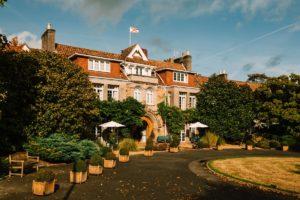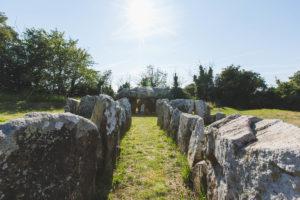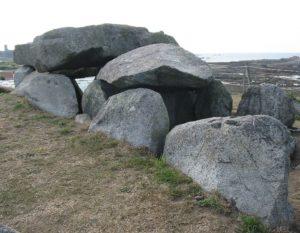If you’re looking for thrills and chills this Halloween, you might not have to look far.
The Channel Islands have a rich history steeped in folklore and tales of the supernatural. Legends of wild dogs, demonic creatures and vicious fairies are abound across the archipelago.
Some of these wild tales have been documented in local literature, such as Marie de Garis’s Folklore in Guernsey, and Jersey Ghost Stories by Erred Michaels and Noah Goats. While other local legends remain hearsay and rumour.
Whether you’re a believer or a cynic, there’s a lot of fun to be had reading the myths and exploring the locations, especially by the eerie light of the moon.
With Halloween around the corner, here’s our guide to some of the Channel Islands’ creepiest locations. Read on, if you dare…
Where to scare in Jersey
Bouley Bay

Jersey’s most famous legend concerns a giant black dog which roams the steep hills surrounding Bouley Bay. A sighting of this hell hound, or the sounds of its blood-curdling howl, is said to signal incoming bad weather, warning local fisherman to stay away from the sea.
Witches’ Rock
On the south east of the island, a rock called Rocqueberg is rumoured to have been a meeting place for magical creatures, including witches who could enchant strangers with a false facade of beauty. The local fisherman, however, knew better than to fall for their tricks. Instead, they would throw the thirteenth fish of their catch as a tribute, or else the witches would raise a storm and destroy their boats.
Longueville Manor

Now a delightful, five-star, luxury hotel, this old manor has a colourful past. In 1564, its lord, Hoste Nicolle, framed a man for the slaughter of sheep. As a consequence, the man was executed but not before swearing vengeance on Nicolle, who subsequently disappeared, never to be seen again. It is said that on the anniversary of Nicolle’s death the galloping of horses can be heard around the Manor.
Waterworks Valley
This beautiful valley is said to be cursed by a ghostly bride, searching for the man who abandoned her at the alter centuries ago.
The dolmens and Menhir stones

According to Jersey, the island was the final refuge of the fairy people and the many ancient dolmens and Menhir stones are said to mark the location of passages to fairyland.
Ghost Hill
The sound of relentless screaming was said to come from a house on the hill above the harbour of St Aubin. Keeping locals awake at night, the house had to be torn down, but when a new home was built re-using the same stone, the screaming began once more. It was demolished a second time.
Wizarding haunts and beasts of the Bailiwick of Guernsey
Cliff Street
The legend of La Bête De La Tour, which translates as the Beast of the Tower, is Guernsey’s most well known demon dog. Wrapped in rattling chains, with eyes of burning red, the beast is said to roam the street and the surrounding areas. The sight of it was believed to bring death upon the viewer. Gulp.
The Catioroc

The headland between Perelle and L’Eree is said to have been the weekly Friday night hang-out for the island’s once thriving population of witches and wizards. Legend has it that the Longfrie and the crossroads at Les Eturs were also popular meet-up spots for the local witch community.
Tower Hill
Tower Hill is where those accused of heresy or witchcraft were executed. A recorded 44 people were burned at the stake on suspicion of performing witchcraft in Guernsey during an 80-year period from 1560 to 1640.
La Coupee, Sark

Sark has its very own demon dog which haunts the La Coupée. As is the case with most of these creepy canines, it has glowing red eyes and is said to be an omen of death.
Vazon Bay
One of Guernsey’s most famous tales is the Invasion of the Fairies. It starts off nice enough; a beautiful girl finds a fairy king asleep under a hedge near Vazon. He falls in love with her and persuades her to sail with him to fairyland, where she becomes Queen.
Then, seeing her beauty, the other fairies decided they all want Guernsey wives, so launch an invasion, landing at Vazon. The island’s men lose the battle and the fairies settle down with Guernsey women (who don’t seem to have much say in the matter). Some say that most Guernsey folk are descendants of these fairies, due to their relatively short stature.


















